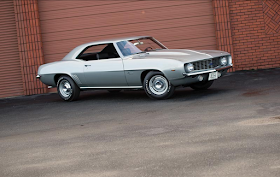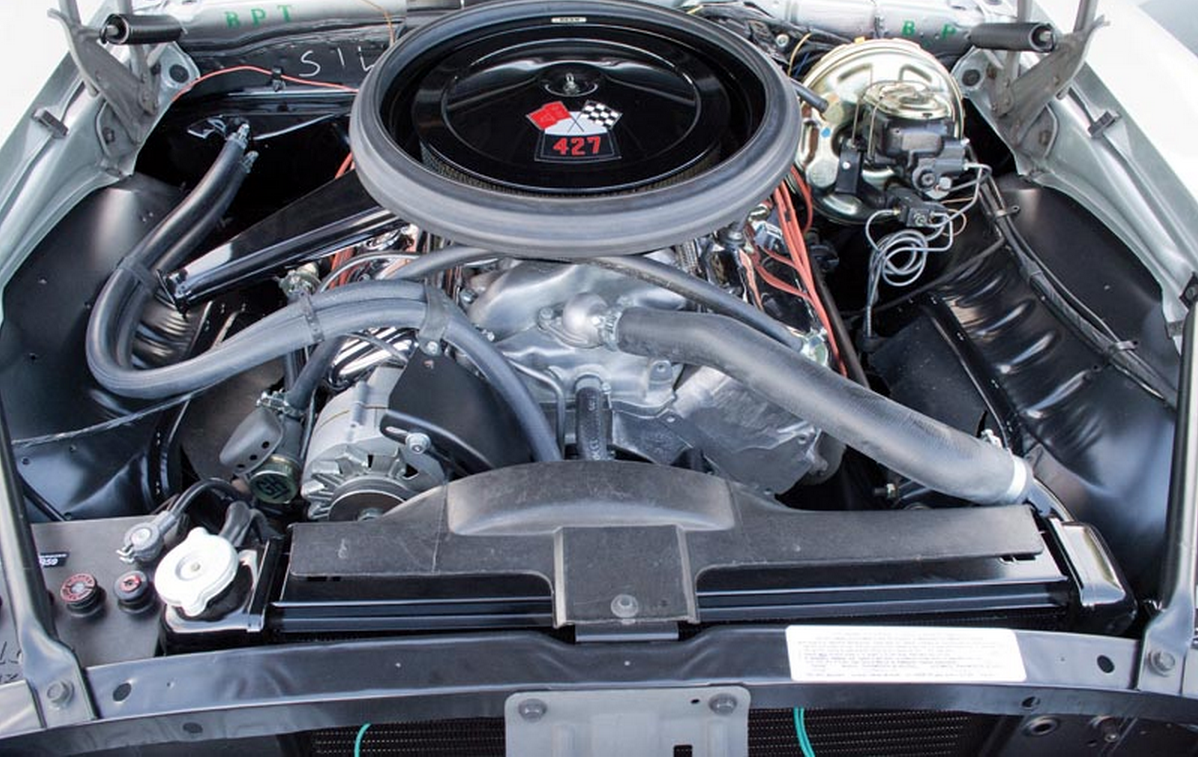A GM corporate edict forbade Chevrolet from installing engines larger than 400 cu in (6.6 l). However, two Central Office Production Orders (COPO) 427 cu in V8 engines, numbers 9560 and 9561, were offered from dealers in the 1969 model year of the Chevrolet Camaro. COPO 9561 used the solid lifter L72 big-block engine, making an underrated 425 hp. COPO 9560 used an all-aluminum big-block called the ZL-1 and was designed specifically for drag racing. It was the most powerful engine offered in the 1st generation Chevrolet Camaro (1967-69). Though rated at 430 hp (321 kW) gross, the ZL-1 made 376 SAE Net hp in its "as installed" state. With exhaust changes and some tuning, the horsepower jumped to over 500. (wikipedia)
Central Office Production Order (COPO) Camaros are the stuff of muscle car legend. Just 69 were built with the aluminum ZL1 V-8, and many went on to achieve drag racing glory, meaning they were tubbed and altered as needed to win races. Intact cars, with original sheetmetal and numbers-matching 427-cu.in. ZL1 V-8s, are a rare find.
Fred Gibb's Camaro ZL-1
As a Chevrolet dealer in La Harpe, Illinois, Fred Gibb wanted to beat his competitors’ products on the drag strip. Doing so would require circumventing GM’s “nothing larger than 400-cu.in.” policy for the Camaro. Fifty Central Office Production Order Camaros, the minimum required for Super Stock homologation under NHRA rules, were ordered by Gibb Chevrolet, each equipped with the aluminum ZL1 V-8, an engine developed for Can-Am racing and never intended for street use.
The Camaros ordered by Gibb began as SS base models, equipped with the 396-cu.in., 375-horsepower L78 V-8, deleted at the time of ZL1 V-8 installation. Each also received F70x14 raised white letter tires, power front disc brakes, a cowl induction hood and either one of two Muncie four-speed manual transmissions or a three-speed Turbo Hydra-Matic automatic transmission. As with transmissions, buyers could also choose from a color palette that included Hugger Orange, Cortez Silver, Fathom Green, Le Mans Blue, Dusk Blue, Dover White, Garnet Red or Daytona Yellow.
Gibb was originally quoted a price of $2,000 for the high-performance package, on top of the L78 Camaro’s sticker price of approximately $3,000. Once production began, however, the actual cost of the 9560 package that created the COPO Camaro was $4,160.15, more than the car itself. Despite the price, an additional 19 COPO Camaros were ordered by Chevrolet dealers, bringing total production to 69 units, ultimately sold through 41 dealerships. (blog.hemmings.com)
(Photos from blog.hemmings.com)
(Photos from boldride.com & autowp.ru)






































































